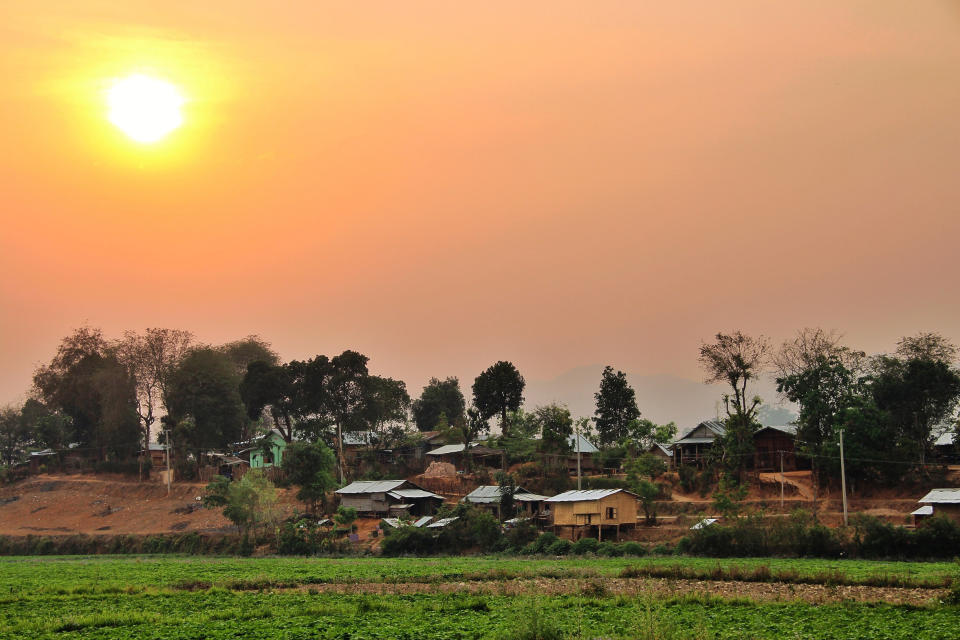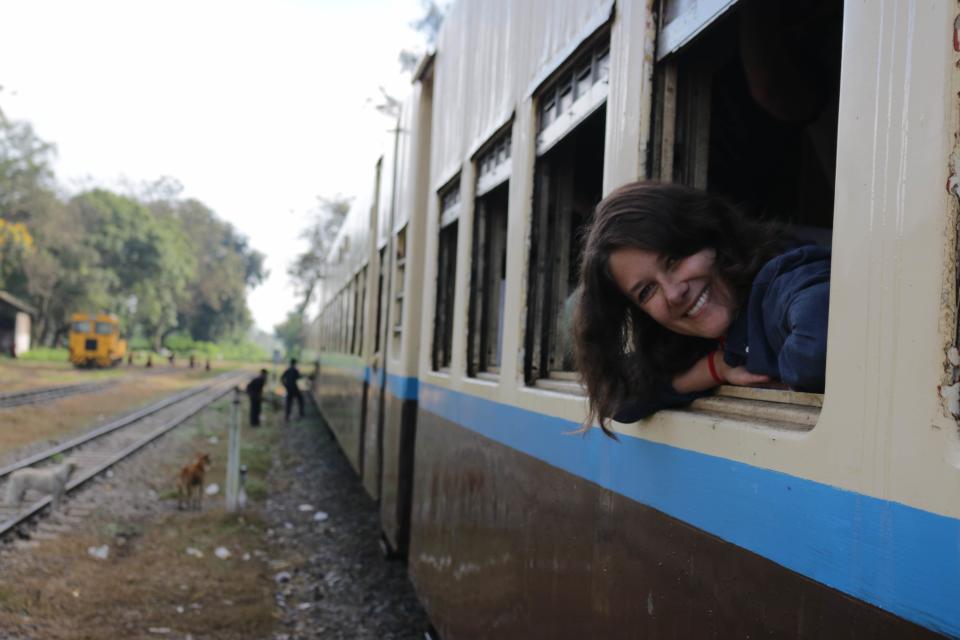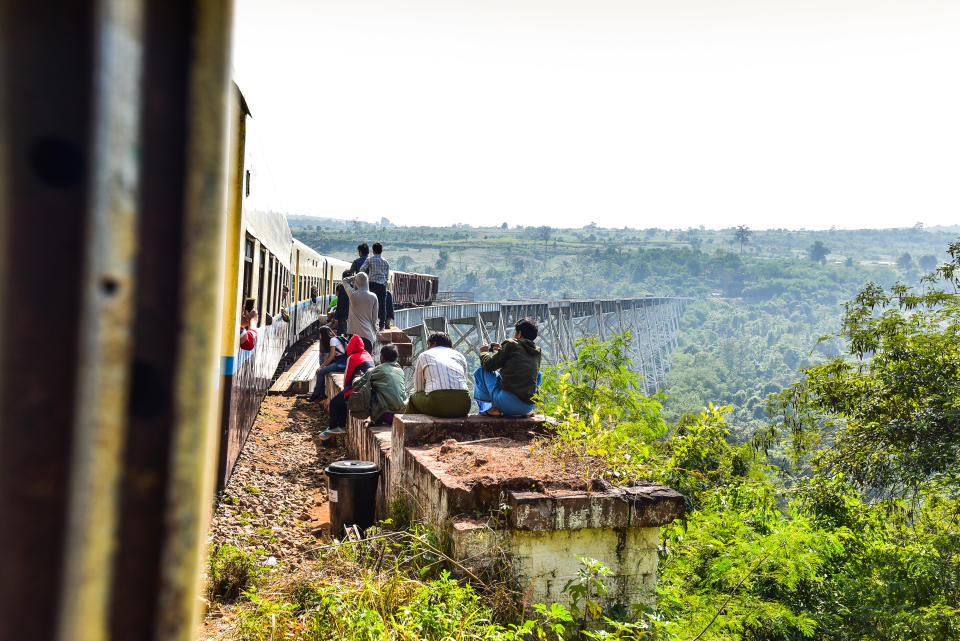Myanmar for £3 – is this the world’s cheapest trip of a lifetime?

If you want to get somewhere in a hurry, you don’t catch a train in Myanmar. It’s not that they are late - although they often are - it’s that they are so slow and bumpy that boarding one is an adventure in itself.

Trains chug along the historic and beautiful Shan State Goteik Viaduct at a comical pace of about 15kph (9.3mph). Our 100km (62mile) trip from colonial hill station Pyin Oo Lwin to the trekking base of Hsipaw took seven hours. But when you’re moving at the speed of a light jog, nobody’s counting, and the sleepy pace sets the tone for the whole journey.
There’s an indisputable serenity to getting on a train with a carriage full of people who all know it’s going to take seven hours to travel 100 kilometres but who bought tickets anyway. You bump along, sharing snacks with your neighbours, sticking your head out the window, waving to local kids and ducking back inside when the trackside vegetation whips into the carriage.

Only two trains do this trip each day - one up, one down - so it’s a constant battle between rapidly growing wildflowers and the train’s gaping windows. The train moves through the flora like a very slow, very blunt weed-eater. Don’t wear white – you will definitely get grass stains.
As the train saunters through the picturesque countryside, women move through the carriages chanting out their wares. We get cold canned coffee, hot steamed peanuts and fresh noodles. Our neighbours lean over to offer us some of their betel.

It’s a mild stimulant; peppery, spicy and numbing at first, then it gets you a bit tingly all over. “Makes you cuckoo”, the man says, pointing to his head.
We spit the juice out the side of the carriage. Great red globs join the shrubs. The head rush makes the whole thing hilarious.
Leaning out the window we get a great view of the incredible sideways swinging of the carriages ahead. According to nerdy train website Seat61, this is down to a mismatch between the size of the tracks and the width of the (very old) Chinese carriages.

A few rows back we spot a man in an EU Observer vest – a reminder of the tensions between persecuted minority groups, armies and the government. In parts of the country, you might see the temporary huts of internally displaced people. You will undoubtedly cross army checkpoints. There will be long, slow detours around sections of the country that are off-limits to tourists.
The train buffs are on board too, to experience an incredible feat of engineering, the Goteik Viaduct. The bridge spans a deep, astonishing gorge. At the time of construction, it was the world’s largest railway trestle, and it remains Myanmar’s highest bridge. It was built to last 100 years. That was in 1900.

But don't let it put you off; there has been maintenance work since then. The jogging train slows to a cautious walk across the bridge, giving everyone plenty of time to gape at the waterfalls pounding the side of the deep forested valley. Vast and wild, for me, the gorge itself inspires more awe than the feat of engineering that crosses it.
We travelled in “upper class”, which means the seats are padded. It doesn’t mean much more. The carriage is grubby and my footrest falls to the floor with a clank. A mouse runs by. There are USB plugs and A/C vents. Neither work. Some seats have a reclining function, others don't. None of this matters. The trip is beautiful, hilarious and serene – and we paid 5500 kyat (£3) for two tickets. This is quite possibly the world’s cheapest trip of a lifetime.

How to do it
The Mandalay - Lashio train chugs up through Shan State once a day, leaving Mandalay at 4am, arriving in Pin Oo Lwin at 7.40am daily (where it will wait for 30 minutes) and getting to Hsipaw at 4pm, where most of the tourists will get off. Seats on the left-hand side offer the best views of the gorge.
Many things in Myanmar are still done manually, including the train ticketing system. If you don’t want to pay a small commission to an agent or guest house to sort it out for you, you have to buy your ticket from the station you’re travelling from. Smaller stations may open for just a couple of hours each afternoon. If you’re travelling upper class, you can buy your ticket three days in advance. Ordinary class tickets are only available the day before. There is no website for Myanmar Rail - the internet is about as fast as the trains.


